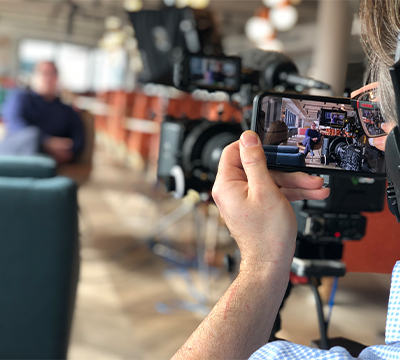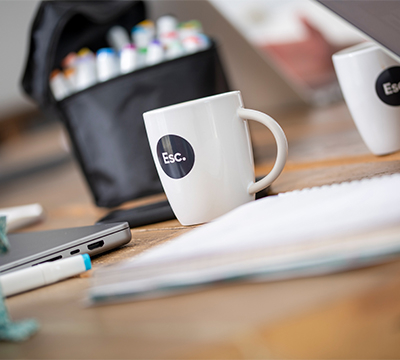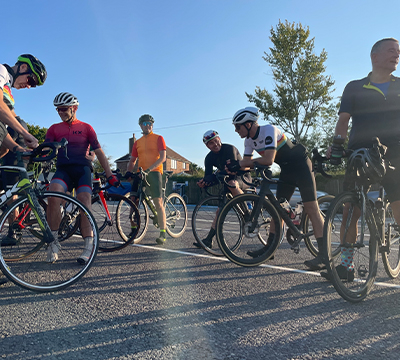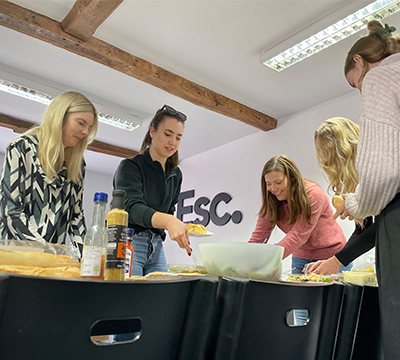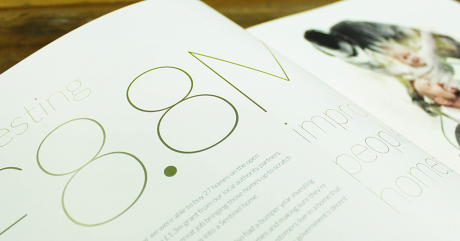
Insights How to increase your sales leads at exhibitions
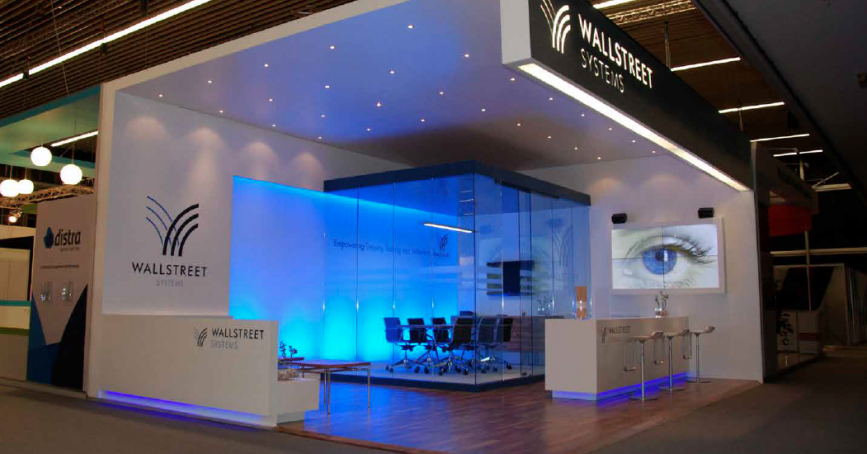
Although you cannot guarantee the quality of any exhibition, you can, like all marketing activities, control how you choose to take advantage of the opportunity. With appropriate planning and goal setting, you will not only establish specific targets, you will be able to identify your prospects, sell relevant benefits and increase your return.
Planning
Set specific goals
By analysing your target audience, you will know how to message your exhibition stand and who to approach before, during and after your exhibition. The more specific and realistic your goals, the more likely you will achieve them. But, make sure you delve deeper when identifying your prospects:
Do you want to generate 200 sales leads? Or, more specifically;
50 sales leads of people looking to spend in the next six months? Or;
Meet 25 qualified new prospects at senior purchasing level in IT for companies with 500+ seats?
Attract your target market
The theme of your exhibition campaign should be targeted towards your specific target market. The messaging in this is very important, ie. financial directors will have different priorities when assessing your product or service compared to a sales director.
You have your brand and brand guidelines, but your exhibition theme needs to engage your specific audience. This includes the design of your exhibition stand, the imagery and words you use and your handouts; even the type of person manning your stand and their sales pitch will need to be appropriate.
Cohesive branding
Once you have established your target market, you can begin to understand what will engage them.
You can utilise your current sales process. What questions and credentials are asked of you when you do a sales pitch? Can these be created into collateral to pass out, pre-qualifying your company to a lead?
Production time guidelines
Conceptual design, development and artworking is as easy as you make it. With a clear brief, your design agency has more chance of delivering concepts that target your requirements.
Allow for at least two weeks of initial creative. Then you will also need time for development and artwork creation - anywhere between 1 and 3 weeks depending on how you drive the project, client-side, and how reactive your agency is. Then follows production times:
Stand build takes about 2-3 weeks, depending on complexity.
Allow 2 weeks for the production of a pop-up stand or banner stand.
Simple brochures or leaflets can be produced in a matter of days, a more complex piece may take a couple of weeks to print and produce.
The same goes for promotional gifts and clothing. Allow 2-4 weeks production time.
Organise backwards and leave extra time. You book your stand well in advance, why not start production early?
Prepare your exhibition staff
People like people like people, and exhibitions are a great way of connecting directly with a prospect. The staff manning your exhibition stand need to understand the specific goals of the event, potential questions that may arise from a visitor and who to target.
Maximise the effectiveness of results by pinpointing strengths and weaknesses of your team and applying roles in the process. If you incentivize your staff, do so in a way to encourage teamwork, rather than aggressive, competing salespeople. It's about company performance, not individual commissions.
Market your attendance
Use your existing marketing databases to let contacts know that you are attending an event. Contact local and trade press with releases about your appearance. Is there anything you can utilise to add more appeal, such as a new product launch?
Up-front incentives
Can you create a reason to motivate people to visit your exhibition stand? A competition or prize draw can achieve this, but does it fit in with your brand values and target market? Is there a better way of achieving the same thing?
Stock up and organise
Make sure you prepare for different eventualities. Do you have enough stock? Top up on hand-outs, refreshments, and any other items you may need, including spares leads and batteries... what's the worst that can happen? Plan for it.
Also, on your feet for most of the day, you may welcome areas for rest, away from the glare of the delegates on your stand. How will this be planned? You don't want resting staff sitting with their feet up, eating a chocolate bar, when a top prospect may pass at any time.
The exhibition
The day has arrived and you have a great exhibition stand that should attract the right prospects. The marketing message is spot-on, your sales objectives are clear; your staff know their goals and are motivated. It's now down to the people on your stand.
Get the most from your people
You need to keep the initial positive feeling as the day wears on. You may get tired, get a few knock-backs, but you need to ensure there is support for the whole team. A highly motivated, well-informed team differentiates you from other exhibitors. Regular briefings and teamwork are a must. Share goal progress and feedback from interactions to help refine your sales process. Keep the energy up and the attitudes positive.
Optimise your attention
You need to ensure that you maximise sales opportunities. To do this you will need to identify your prospects and spend the appropriate time to filter these as genuine sales leads.
Attract and engage
Your appropriate marketing messages should filter out casual visitors and draw relevant people in, but you do need to attract people yourself.
You can use an outgoing member of your team to leave your stand and approach people all over the exhibition. Use the strengths of your team to bring people into your space.
Don't be scared to reject visitors if they are not relevant. You are there to sell, not advise people who do what you do. Politely filter out wrong-fit visitors: They still have the power of word-of-mouth and you don't want them doing this negatively.
Focus on the benefits your product or service has to offer the prospect directly. You should have demonstrations and marketing material that answers the questions of your prospects, based on your targeted sales pitch. If you end up with an interested prospect, close in on them gently, taking appropriate contact details.
Ensure you take good notes that you will remember when you get back to the office. Remember a few off-topic details so your follow-up is more personal. If you need to ask a question again to make sure you have the details correctly, do so. It shows you are interested as you focus on your prospect.
People like people
Firstly, you need to make sure you are approachable. If your team are huddled negatively discussing a recent visitor to your stand, your stand won't exactly be inviting.
Also, remember that not every person clicks personally and rapport during sales is essential. Establish between your team who works best with which kind of person. If you make contact with a prospect on your stand and your discussions aren't going well, don't be afraid to bring in a more relevant colleague.
Earn media coverage
Pre-invite key journalists to visit your exhibition stand and encourage your marketing team to the event to help market your company on-site. Keep a good supply of your literature in the show press office and work with the show organiser to improve your profile. And, when the press visit your site, make sure someone is available to speak to them.
Keep it all business
A friendly environment on your exhibition stand may encourage people to drop in and stay chatting. Do you really want that?
Current customers might expect your undivided attention if they appear, but unless they're your main reason for attending, try to set aside specific times for them, ideally in a hospitality area on or off the stand.
Networking with existing contacts is part of the appeal of an exhibition, but you'll want to keep it under control.
Focus on your key goals
Remember, you are at the exhibition to achieve specific business goals and not every visitor is the right fit. Keep your eye on the prize, your strategy in focus and you will engage with the right people.
After the exhibition
Away from the glare of the lights and the buzz of the exhibition, it's back down to business.
Now is the time to follow through all of the new sales opportunities you've generated. This is where some companies squander the benefits they've worked so hard to achieve while others capitalise on them and turn them into profits.
De-brief the team
When you get back to the office, sit down with the stand staff, your marketing team and key managers. Do an assessment of what worked and what didn't. Discuss suggestions for improving performance at future exhibitions.
Measure your results
Now is the time to measure your success against the specific, measurable goals you set yourself before the event. Dissect the event in terms of effectiveness to help plan future events and determine future development of your techniques.
Successful sales teams follow lead-tracking up to a year later to track the new contacts right through to the bottom line. Only then can you determine the value of the exhibition for your company and whether your marketing budget was well spent.
Follow up all contacts
Every visitor to your exhibition stand should receive a timely follow-up, ranging from a simple thank-you letter to a visit, phone call or information pack, depending on the quality of the sales lead. To your prospects, the days and weeks following the exhibition define who most wants their business.
Send a generic mailing to all show visitors You may not be able to meet every visitor at an exhibition, but you can contact them afterwards.
Most event organisers make the visitor lists available for free or for a one-time rental fee. A quick 'Sorry we missed you but did you know...' can create a few new leads and at the very least, give your business additional profile to an industry audience.
Follow through on press releases
Call all the editors you mailed your press releases to or who visited you on your exhibition stand. Ask if there's any more information they might need. A phone call at the right time could mean a solid mention in a post-show review in the trade press.
Making the most of exhibitions
Exhibitions can be effective and by planning a few simple activities before, during and after each event, they work even harder for you and your marketing budget.
Share insight
Let's talk
- Call us +44 (0) 1256 334567
If you would like to find out more about how we can help you connect strategically, creatively or digitally, then call us or get in touch. We’d love to hear from you.


